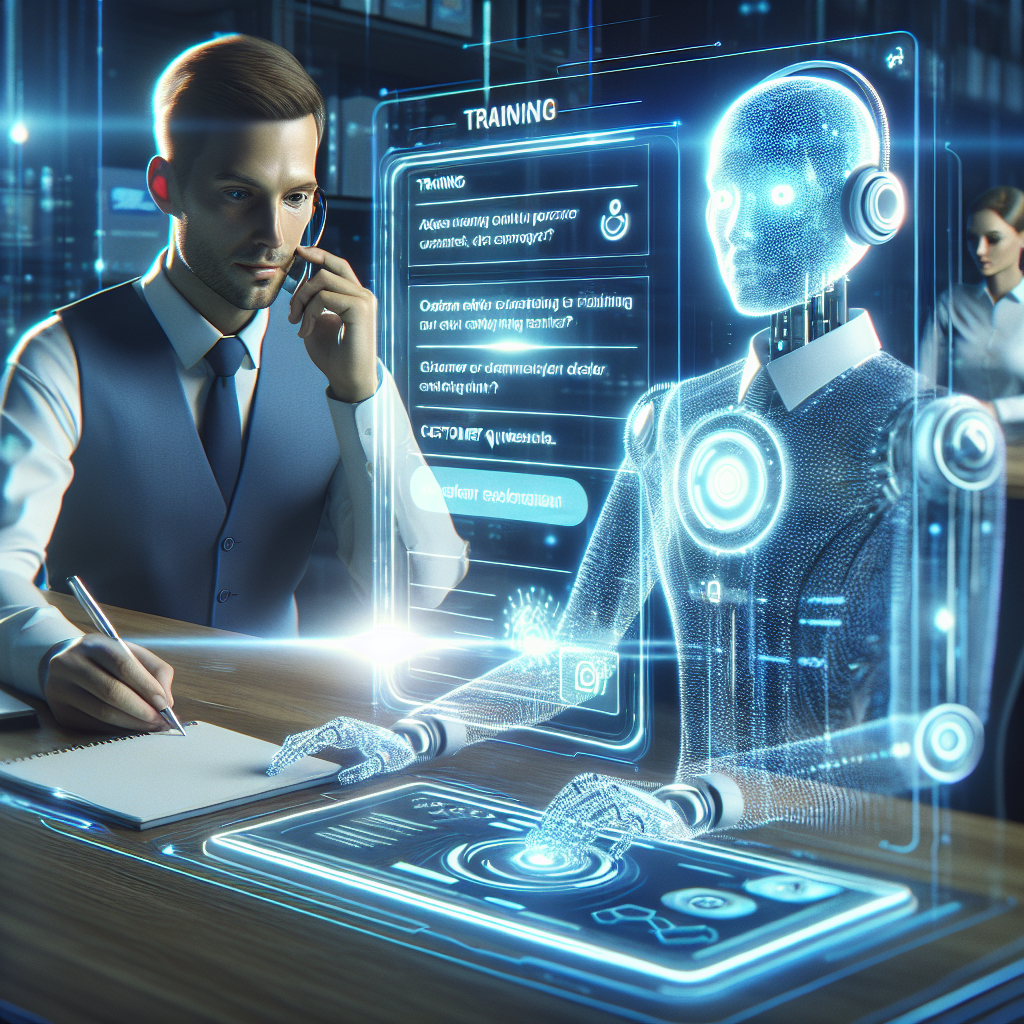Introduction
In the fast-paced world of customer service, chatbots are becoming an indispensable tool not just for handling inquiries but also for training customer service representatives. The integration of chatbots training customer service reps offers a unique blend of AI-driven simulations and real-time learning, reshaping how companies approach training and development.
The Role of Chatbots in Training
Chatbots, powered by advanced artificial intelligence (AI) and machine learning algorithms, are being used to simulate customer interactions, allowing new reps to gain experience without the risk of damaging customer relationships. This method provides a safe environment for learning and experimentation, crucial for building confidence and competence in handling various customer scenarios.
Real-Time Feedback and Adaptation
One of the significant advantages of using chatbots training customer service reps is the ability to provide immediate feedback. For instance, if a rep responds inappropriately to a simulated customer’s query, the chatbot can instantly suggest improvements or offer tips to handle similar situations better. This immediate correction helps to quickly instill the right practices and approaches among trainees.
Consistency and Scalability
Chatbots offer a consistent training experience for every employee, which is often challenging to achieve through traditional training methods. Whether it’s a small team or a large corporation with thousands of customer service reps, chatbots can scale to meet the training needs without compromising the quality of instruction or requiring significant increases in resources.
Enhancing Soft Skills Through AI
While it’s clear that chatbots are effective for simulating scenarios and providing feedback, they are also increasingly used to train reps in soft skills, such as empathy, patience, and effective communication. AI-driven chatbots can mimic human emotions and reactions, providing reps with opportunities to practice their soft skills in controlled, yet realistic, interaction simulations.
Personalized Learning Paths
AI technology allows chatbots to adapt training modules based on the performance and learning pace of individual reps. This personalized approach ensures that each rep can work on their weaknesses, making the training process much more effective in addressing individual needs.
Case Studies and Success Stories
Many companies have reported significant improvements in customer service quality and efficiency after integrating chatbots into their training programs. For example, a telecom giant implemented a chatbot training program and saw a 40% improvement in response accuracy and a 50% reduction in training time for new employees.
Future Trends in AI and Customer Service Training
Looking forward, the role of chatbots in training customer service reps is set to grow even more sophisticated. With advancements in AI and machine learning, these chatbots will become even better at understanding human emotions and delivering more nuanced responses, which will be critical in training reps to handle complex customer interactions.
Integration with Virtual Reality
Another exciting development is the potential integration of chatbots with virtual reality (VR), providing even more immersive training experiences that can simulate physical and digital interactions simultaneously.
Conclusion
The integration of chatbots training customer service reps is not just a trend but a substantial shift in how customer service training is conducted. By leveraging AI-powered chatbots, companies can provide highly effective, scalable, and personalized training experiences that prepare customer service reps for the demands of modern consumer interactions.
As technology evolves, the depth and realism of these training programs will only increase, setting a new standard in customer service training.


